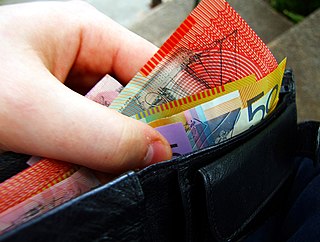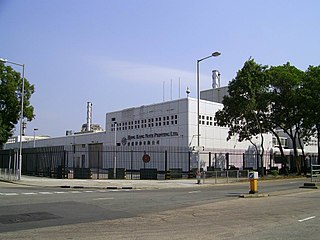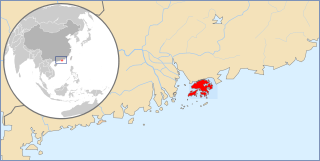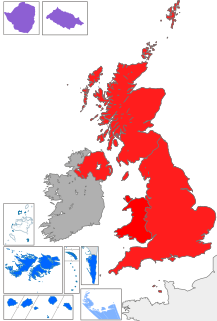
Bradbury Wilkinson & Co were an English engraver and printer of banknotes, postage stamps and share certificates.

Bradbury Wilkinson & Co were an English engraver and printer of banknotes, postage stamps and share certificates.
The original company was established in the 1850s by Henry Bradbury and begun printing banknotes in 1856. [1] Bradbury then died in 1860. [1] In 1873–74, the firm built an imposing six-storey workshop, for engraving printing plates, in Holborn, London at 25 and 27 Farringdon Road, which is now a Grade II-listed building.
The company printed the first series of the Imperial Bank of Persia banknotes that were issued in 1890. [2]
In 1903, the company was acquired by the American Bank Note Company. In 1917, it moved to New Malden in Surrey still operating as Bradbury-Wilkinson as a wholly owned subsidiary of ABNC.

In 1983, Bradbury Wilkinson created a form of polymer banknote using Du Pont's Tyvek material; this was marketed as Bradvek and used to print 1-pound banknotes for the Isle of Man. In 1986 the company was acquired by De La Rue. The site is now occupied by the Shannon Corner Tesco supermarket. The last Bradbury Wilkinson plant was shut down by De La Rue in 1990.
In 2015 a Seychelles 50 rupee banknote (worth £2.50 or $4), originally issued between 1968 and 1973, featuring Queen Elizabeth II and covertly depicting the word "sex", was sold at auction in the UK for £336 (around $500). Many think Bradbury Wilkinson's engraver Brian Fox put it in. [3] [4]

Messrs. Perkins, Bacon & Co was a printer of books, bank notes and postage stamps, most notable for printing the Penny Black, the world's first adhesive postage stamps, in 1840.

The rupee is the currency of the Seychelles. It is subdivided into 100 cents. In the local Seychellois Creole (Seselwa) language, it is called the roupi and roupie in French. The international currency code is SCR. The abbreviation SR is sometimes used. By population, Seychelles is the smallest country to have an independent monetary policy. Several other currencies are also called rupee.

Clydesdale Bank is a trading name used by Clydesdale Bank plc for its retail banking operations in Scotland.

The Mauritian rupee is the currency of Mauritius. One rupee is subdivided into 100 cents. Several other currencies are also called rupee.
De La Rue plc is a British company headquartered in Basingstoke, England, that designs and produces banknotes, secure polymer substrate and banknote security features for central banks and currency issuing authorities. It is listed on the London Stock Exchange.

The kip is the currency of Laos since 1955. Historically, one kip was divided into 100 att (ອັດ).

Polymer banknotes are banknotes made from a synthetic polymer such as biaxially oriented polypropylene (BOPP). Such notes incorporate many security features not available in paper banknotes, including the use of metameric inks. Polymer banknotes last significantly longer than paper notes, causing a decrease in environmental impact and a reduced cost of production and replacement. Modern polymer banknotes were first developed by the Reserve Bank of Australia (RBA), Commonwealth Scientific and Industrial Research Organisation (CSIRO) and The University of Melbourne. They were first issued as currency in Australia during 1988 ; by 1996, the Australian dollar was switched completely to polymer banknotes. Romania was the first country in Europe to issue a plastic note in 1999 and became the third country after Australia and New Zealand to fully convert to polymer by 2003.

Hong Kong Note Printing Limited is a company which prints the bank notes of all the three note-issuing banks in Hong Kong. The banknote printing plant was founded in 1984 by Thomas De La Rue in Tai Po Industrial Estate. In April 1996, the Hong Kong Government purchased the plant through the Exchange Fund, and operated it under the current name.

The issue of banknotes of the Hong Kong dollar is governed in the Special Administrative Region of Hong Kong by the Hong Kong Monetary Authority (HKMA), the governmental currency board of Hong Kong. Under licence from the HKMA, three commercial banks issue their own banknotes for general circulation in the region. Notes are also issued by the HKMA itself.

Crane Currency is a manufacturer of cotton based paper products used in the printing of banknotes, passports, and other secure documents.

Waterlow and Sons Limited was a major worldwide engraver of currency, postage stamps, stocks and bond certificates based in London, Watford and Dunstable in England. The company was founded as a family business in 1810. It was acquired in 1961 by De La Rue.

The Bank of England, which is now the central bank of the United Kingdom, British Crown Dependencies and British Overseas Territories, has issued banknotes since 1694. In 1921 the Bank of England gained a legal monopoly on the issue of banknotes in England and Wales, a process that started with the Bank Charter Act of 1844 when the ability of other banks to issue notes was restricted.
The British Armed Forces issued their own banknotes between 1946 and 1972.

Canadian Landscape is the third series of banknotes of the Canadian dollar issued by the Bank of Canada, first circulated in 1954. The banknotes were designed in 1952 following the accession of Elizabeth II to the throne after the death of her father George VI. The banknote designs differed significantly from the preceding 1937 Series banknotes, though the denomination colours and bilingual printing were retained. This series was followed by the 1969 Scenes of Canada series.
Scenes of Canada is the fourth series of banknotes of the Canadian dollar issued by the Bank of Canada. It was first circulated in 1970 to succeed the 1954 Canadian Landscape series and was followed by the 1986 Birds of Canada banknote series. This was the last series to feature a $1 bill, which was replaced by a $1 coin known as the loonie in 1987, although both the $1 bill and the loonie were produced concurrently for 21 months, from June 1987 to April 1989.
New Zealand dollar banknotes are the banknotes in circulation in New Zealand, the Cook Islands, Tokelau, Niue and the Pitcairn Islands, denominated in the New Zealand dollar. They are issued by the Reserve Bank of New Zealand and since 1999 have been made of polymer.
Harrison and Sons was a major worldwide engraver and printer of postage stamps and banknotes.

Graham Short, is a micro-artist, living and working in Birmingham, England.

The Bank of England 10 shilling note, colloquially known as the 10 bob note was a sterling banknote. Ten shillings in £sd was half of one pound. The ten-shilling note was the smallest denomination note ever issued by the Bank of England. The note was issued by the Bank of England for the first time in 1928 and continued to be printed until 1969. The note ceased to be legal tender in 1970 and was discontinued in favour of the fifty pence coin due to inflation.